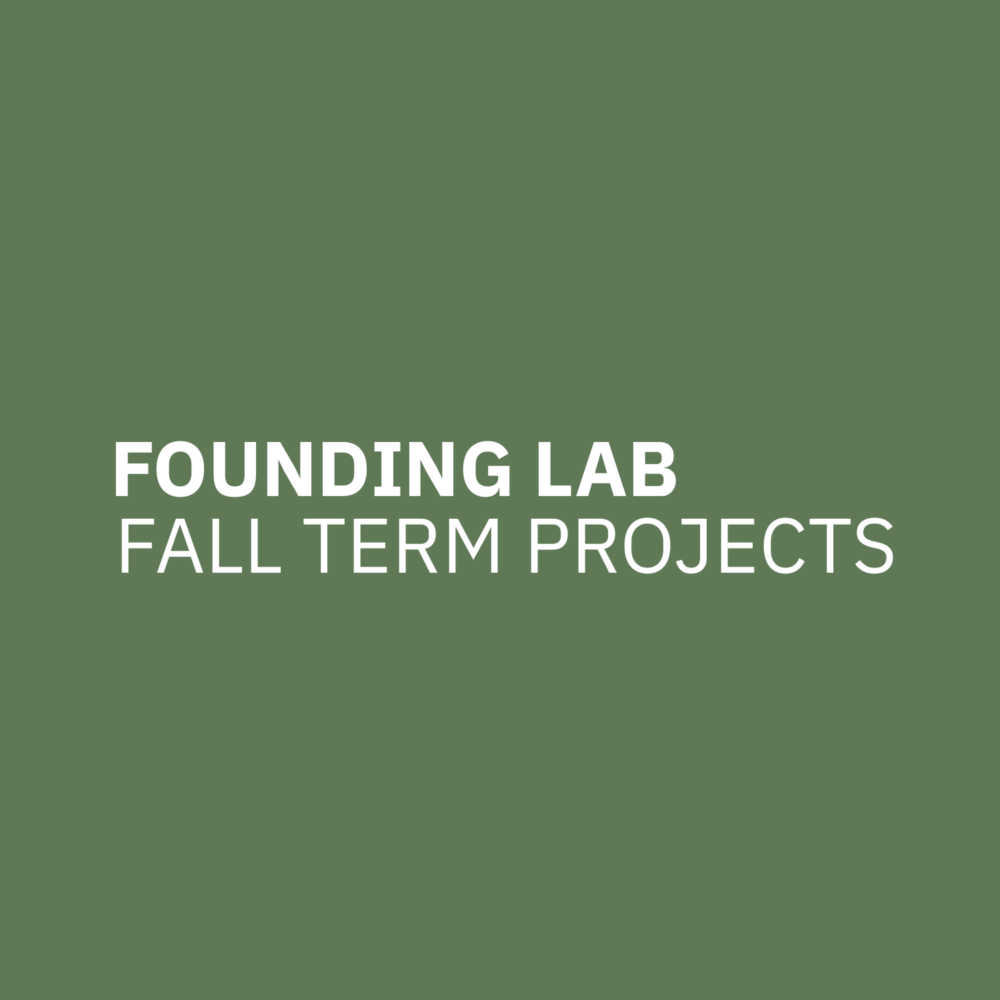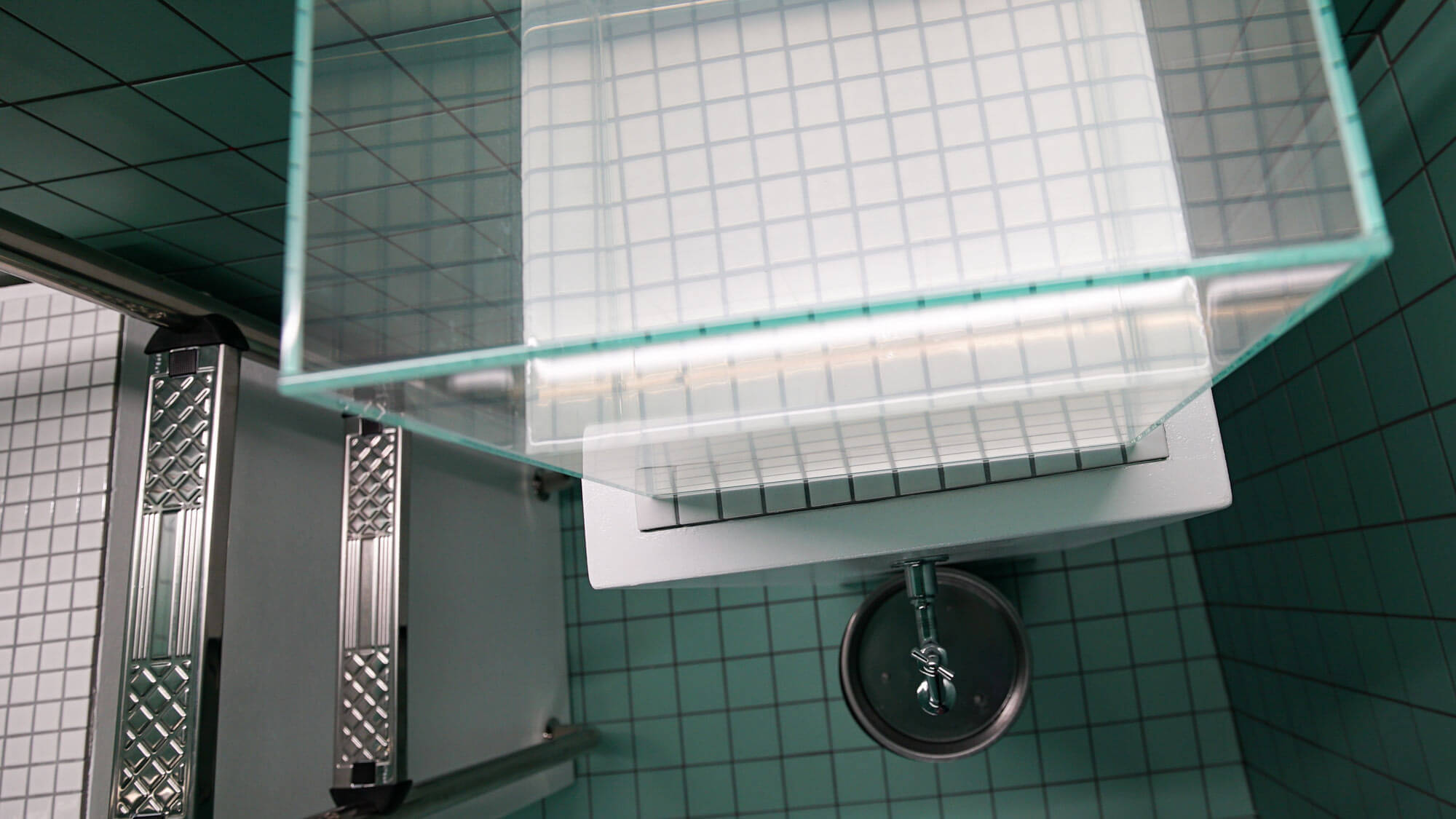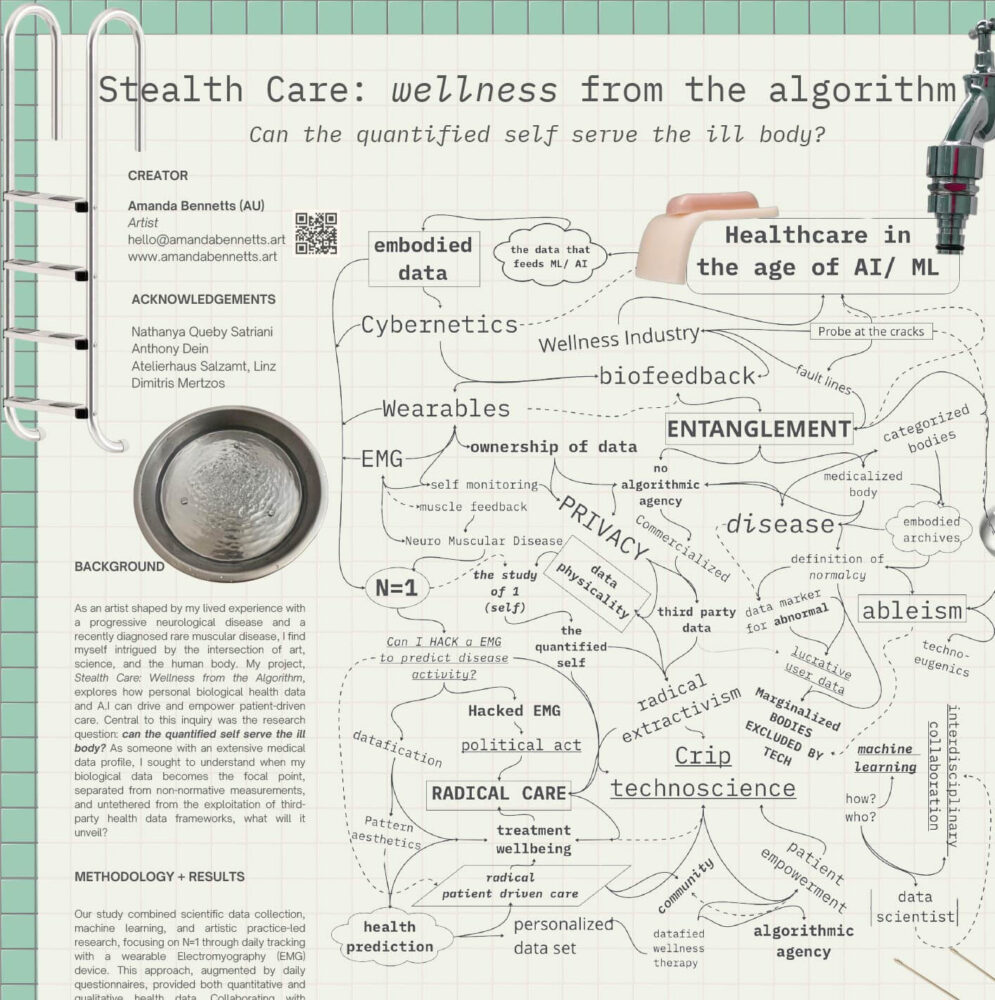

Stealth Care: wellness from the algorithm
by
Amanda Bennetts
Concept
During the FOUNDING LAB Fall Term, „Stealth Care: wellness from the algorithm“ emerged as a critical exploration of the intersection between personal health data, AI, and artistic research. The project originated from an AI-driven analysis of non-specific symptoms I was experiencing, which intriguingly aligned with a subsequent medical diagnosis of a rare muscle disease. This serendipitous alignment between AI insights and medical reality ignited a journey into the potential and pitfalls of using personal data in AI-driven healthcare, particularly in the context of chronic illnesses and disability.
Central to this inquiry was the research question: can the quantified self serve the ill body? My approach combined self-tracking and scientific data collection with artistic research. An N=1 study (the study of one subject) was the foundation, involving the daily use of an Electromyography (EMG) wearable to gather neuromuscular activity data, supplemented by questionnaires for qualitative health insights. This amalgamation of quantitative and qualitative data was then analyzed in collaboration with Nathanya Queby Satriani, a JKU AI Data Science student, who employed machine learning to accurately decipher patterns, particularly those predicting the need for rest as a preventive health measure.
In an era where AI-driven healthcare converges with the capitalistic motives of the wellness industry, the lines between empirical treatment and pseudo-scientific wellness industries increasingly blur, fuelled by the commodification of personal biological health data. This blurring of healthcare and wellness industries fuelled the conceptual framework for the immersive installation that physically re-embodied the extracted biological data as a “bio-resonance” wellness elixir. Using an existing campus bathroom to construct a space where clinical and therapeutic elements precariously coexist, reflecting both the sterility of medical spaces and the tranquillity of wellness spas. I used audio cymatics to visualize my EMG data, giving physicality to the unseen frequencies of my muscles. Re-embodying my muscle frequencies aims to bridge the clinical data with human experience but also explores these frequencies as a form of speculative ambiguous therapy.
Throughout the process, questions were raised about the role of AI in healthcare and the data that feeds it, the ethical considerations of algorithm-driven health management, and the potential of artistic research to add depth to scientific findings.
However, a critical question emerges: do the technologies employed in this project, aimed at illuminating the obscure inner workings of the body through wearable technologies and AI analysis, truly render one’s health fully visible and knowable, and does this perceived clarity translate into effective management and autonomy in personal healthcare?
Process Reflection
Art X Science Collaboration
As an artist profoundly influenced by my personal experiences with chronic illness and disability, I am deeply fascinated by the convergence of art, science, and healthcare. This compelling interest motivated me to pursue the opportunity presented by the Founding Lab, leading me to apply for both their Summer School and Fall Term programs. During summer school, my initial objective was to find a data scientist for a collaborative art X science project. Enthusiastically, I embraced my role as an extroverted Australian artist, eagerly sharing my conceptual artwork ideas and seeking collaboration opportunities with every science-disciplined peer I met. In hindsight, this approach, though well-intentioned, was a rookie mistake. However, during the fall term, I gained a deeper understanding of the nuances of interdisciplinary and transdisciplinary collaborations, particularly with art and science.
Through my experience, I realized that successful transdisciplinary collaboration extends beyond mere enthusiasm and creativity; it involves respecting and understanding different disciplines. During the Chapter Blocks and critical discourse group discussions, it became evident that transdisciplinary communication was more challenging than anticipated. Recognizing the importance of speaking the language of other fields, understanding their objectives, and finding common ground in our expertise and interests became crucial. This shift in my approach was instrumental in integrating scientific elements into my project. It not only provided me with a new vocabulary and perspective but also facilitated clear communication with potential scientific collaborators, such as Nathanya Queby Satriani, whose interest in both medicine and AI was particularly relevant.
Applied Technologies and Science
In developing my project, I engaged extensively with a blend of scientific approaches and technologies, focusing on the realms of human-computer interfaces, biosensors, and the N=1 study model. The use of wearable Electromyography (EMG) technology, a prime example of a human-computer interface equipped with biosensors, provided a direct, quantifiable link to my physiological data. My health data harvested from these sensors were adeptly interpreted under the expertise of AI Data Scientist, Nathanya Queby Satriani, who used a Recurrent Neural Network (RNN) model for classification purposes. This model was chosen due to its ability to handle the complexity and non-linear relationships in EMG data. Choosing an N=1 study model was both necessary and a conscious decision, reflecting the realities of researching rare diseases where larger subject sets are not feasible.
As the research questions evolved, they increasingly focused on the subjective experience of the body, challenging the cultural and institutional norms of medical and technological observation. The project demonstrated how artistic practices could offer unconventional narratives, renegotiating the relationship with institutional healthcare and emphasizing the subjective, lived experience.
Acknowledgements
Dimitris Mertzos, Nathanya Queby Satriani, Anthony Dein, Atelierhaus Salzamt Linz



